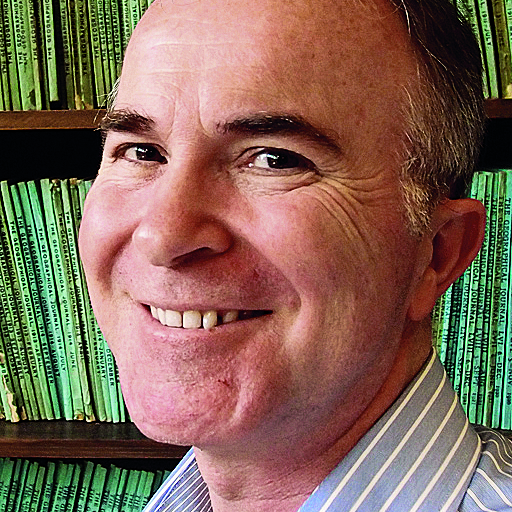Sport Photography: an interview with Chris Smith
A life of taking pictures of classic sporting events and personalities
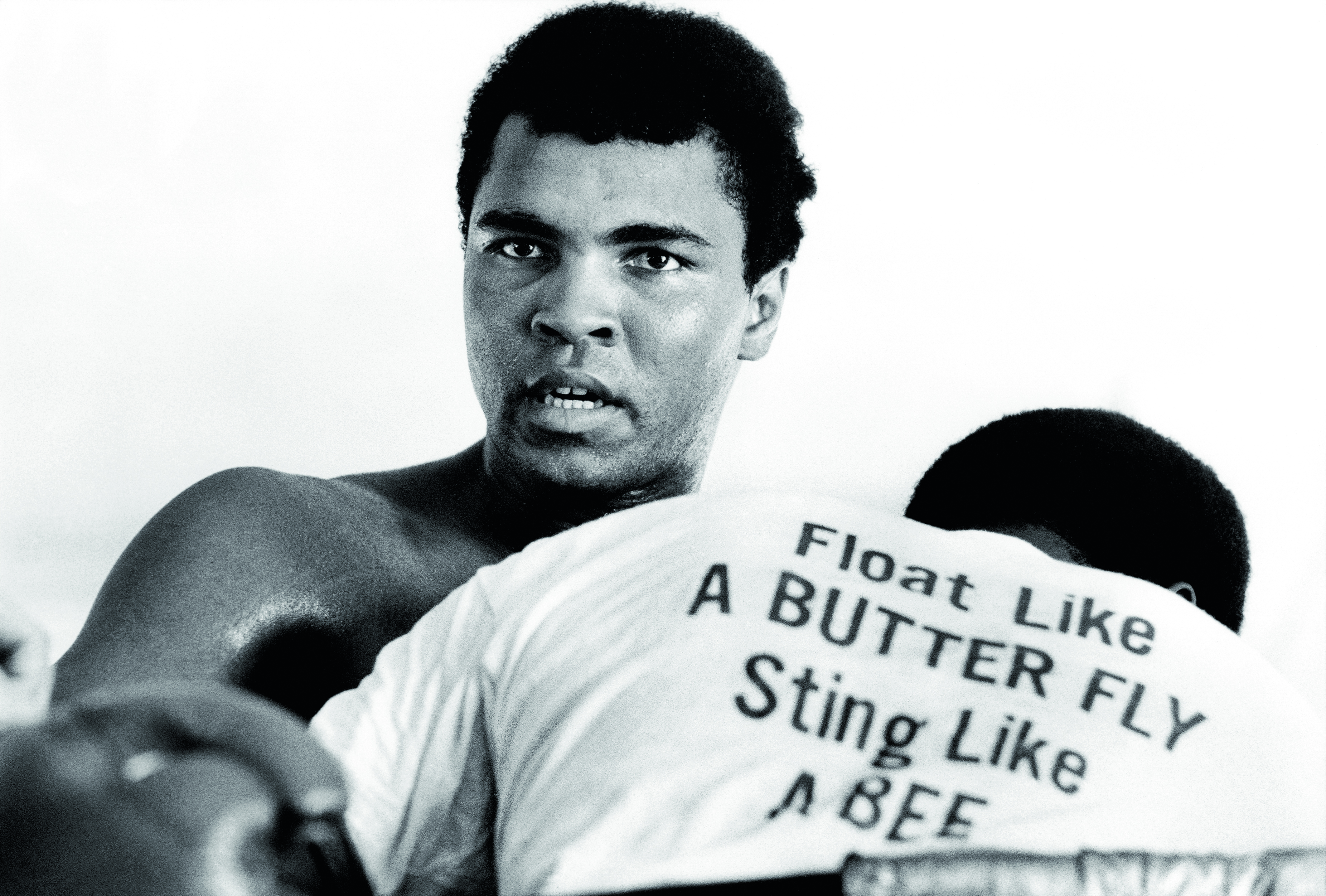
Before Fleet Street swapped its grand newspaper offices for investment banks and luxury hotels, it was the legendary home to hundreds of photographers and journalists keeping the nation updated with the major news stories of the day. This was the pre-digital age before cameras had monitor screens and instant playback to check focusing and exposure, or to discover if the subject really had blinked at the decisive moment.
• Looking for the best camera for sports photography?
By today’s standards, photographers shot ‘blind’ and a roll of film was entrusted to the printer working in his dark cavern of wet and dry benches, with trays of developer and fixer and constant running water. Unlike today, the photographer was often the last person to see the print, even though he or she was the first to find the picture.
Chris Smith remembers these days fondly. He was in his early twenties when he first came to Fleet Street in 1959, traveling down from Hartlepool to join the Daily Herald. The noisy old road was the dream destination for many young provincial photographers and the young Smith was no exception: “I always wanted to go to Fleet Street, which for newspaper people was the Mecca of journalism,” he recalls.
By the time he retired in 2000, his status as one of the most admired and decorated sports photographers in the history of British newspapers was beyond dispute. From the now-defunct Herald he moved to The Observer and then onto The Sunday Times, where he remained for 24 glorious years.

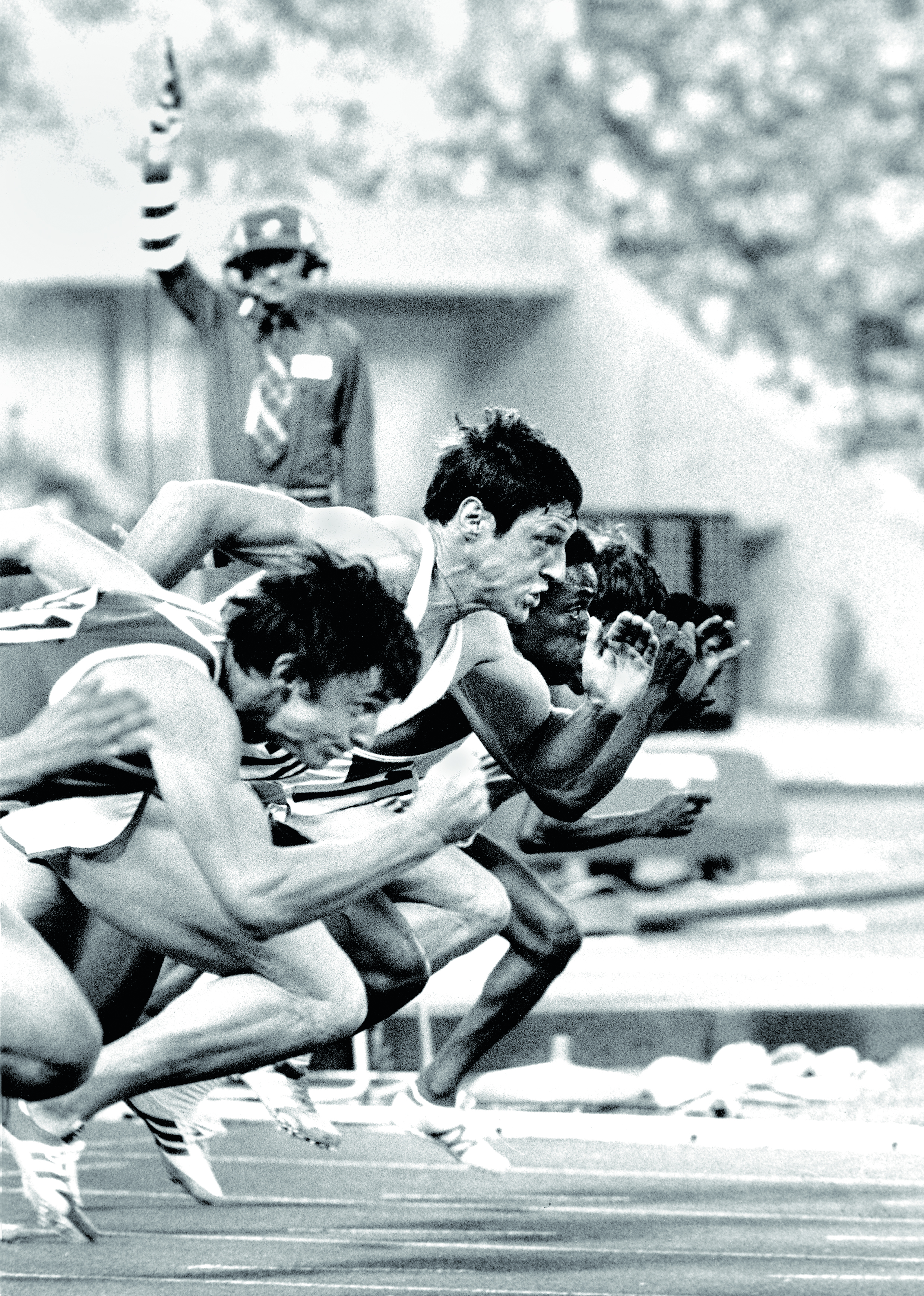
For most of his working life, sport was Chris Smith’s primary focus: from rugby and football World Cups to golf majors and the Olympics, derbies and Grand Nationals, and the biggest boxing bouts ever staged. Smith only began photographing sport in Hartlepool because the staff photographers on his local newspaper “didn’t like getting wet on a Saturday”, and while he no longer misses the weekend grind, he admits, “I certainly did at the time when I retired.”
During his esteemed career, Smith was named British Sports Photographer of the Year on four occasions and twice-winner of the individual Sports Picture of the Year prize. Now, as he approaches his eightieth birthday, the chance to reflect on 50 years in sports photography and the greatest personalities encountered has been given added impetus by the staging of a major retrospective of his work at the National Heritage Centre for Horseracing and Sporting Art in Newmarket, Suffolk.
Get the Digital Camera World Newsletter
The best camera deals, reviews, product advice, and unmissable photography news, direct to your inbox!
The title of the exhibition, ‘Gods of Sport’, hints at the reverence and respect he felt for many of his subjects, particularly Muhammad Ali. It should come as no surprise to learn that many of his fellow photographers feel the same way about Smith.
Let’s turn the clock back. You were just 16 when you started at the Hartlepool Mail. What sort of work were you doing back then?
It was actually a small circulation evening paper, which used to sell about 30,000 copies. I worked there as a junior, mixing chemicals for the darkroom and the other photographers, doing printing, sweeping the floor, keeping the place clean. The best thing was if I wasn’t doing anything, which wasn’t very often, they would send me out and put an entry into the diary that said: ‘Looking for pictures.’ So I could wander out and just snap what took my fancy. It was an industrial town with docks, trawlers coming in and out, steelworks, so I could wander around the docks taking interesting pictures. It was a marvellous brief with a 1914 or 1912 Zeiss plate camera.
Was sport among the pictures you looked for?
I got into sport because the other photographers didn’t like doing it, they didn’t like getting wet on a Saturday. I was quite keen as a kid – I played football, rugby and cricket – and seemed to have an aptitude for it, so they were more than willing to let me go to football as much as I wanted on a Saturday. So that started my sports side, but I did everything else that you do on a local paper: dog shows, flower shows, all of that stuff.
How long were you at the Hartlepool Mail?
I was there until I got called up for two year’s national service at 19. When I finished that I went back to the paper. I always wanted to go to Fleet Street, which for newspaper people was the Mecca of journalism, and I got a job on the Daily Herald, which later closed and relaunched as The Sun. It had some truly great photographers there, including Terry Fincher and Ron Burn. Terry went on to the Daily Express, but I was with him for a while on the Herald.
What year did you join the Herald?
I must have been 21 or 22, so 1959 I guess. I was there for about six or seven years, then freelanced after that. I always admired the Observer. I had a contract there and I started to do most of the paper’s sport. I was there for about seven years. Then The Sunday Times asked me to join them and I worked there for 24 years.
Photographing Muhammad Ali with The Beatles in 1964 (photo on page 23) was fairly early in your career – how did you get to be there?
The Beatles were about to start their first tour of the States and I said to the picture editor (of the Daily Herald), “What about covering it?” The Daily Express with Harry Benson seemed to have the inside track, so we decided to take them on, and I got sent out there. I photographed them in New York where they did The Ed Sullivan Show. But I always wanted to photograph Cassius Clay, as he was known then, because he was making waves in the world of boxing. So I took off down to Miami to see him training for his fight with Sonny Liston.
I was in the gym one day when the doors opened and in walked The Beatles. I think it was as much a surprise to me as it was to Clay. The Beatles had gone down to Miami to play a concert. It was a right bun fight in the gym with the four Beatles and Clay. Terry O’Neill was there and I said to him, “It’s a bit of a corny picture really,” but Terry rather generously said, “Well, you may say it’s a corny picture but out of all those that have been taken that’s the best one. It’s got the five most recognisable faces on the planet in one picture!” I suppose it’s not quite as exaggerated as it sounds. It’s a picture that’s now fairly significant.


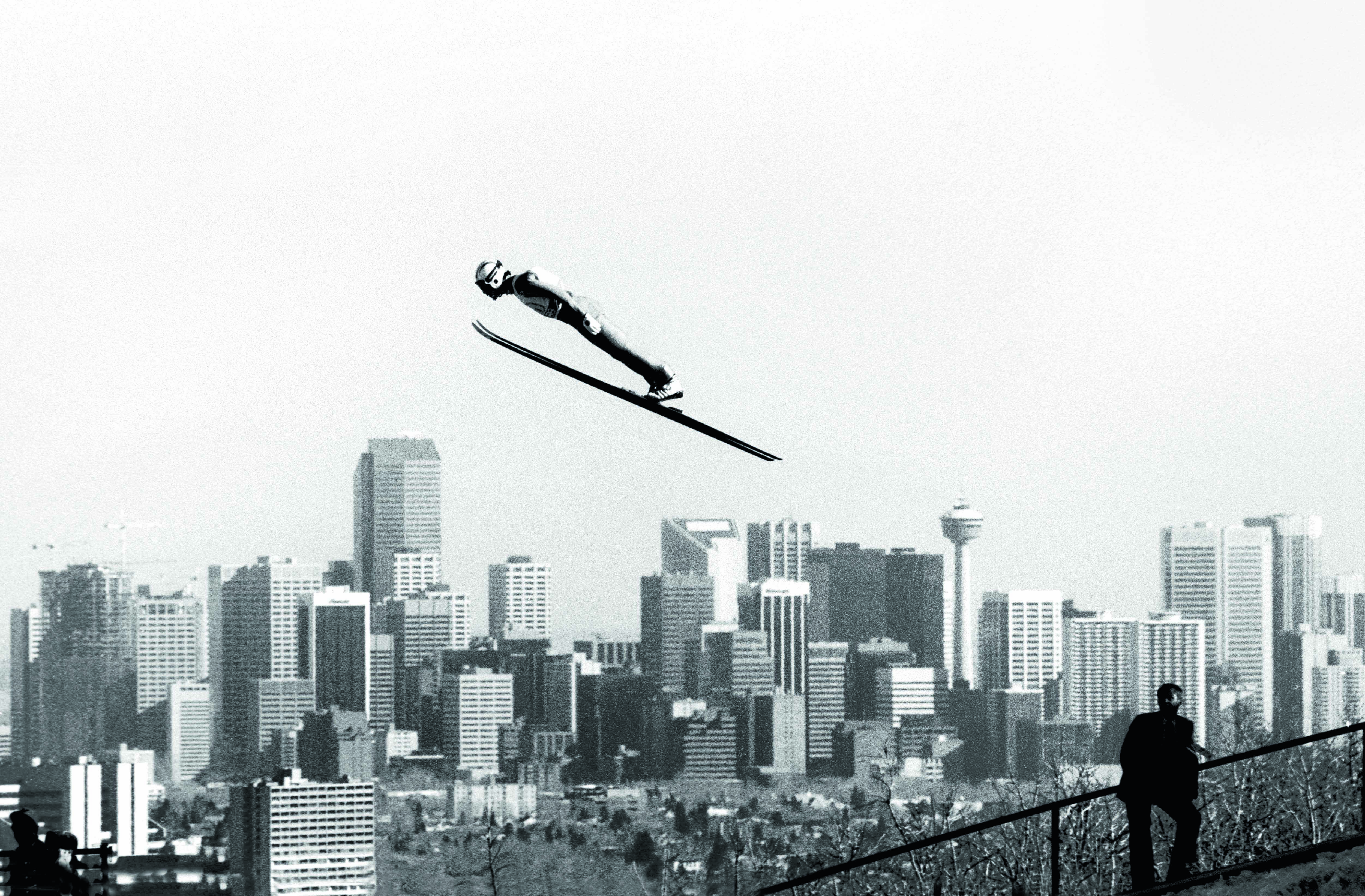
Muhammad Ali always described himself as ‘The Greatest’, but in your opinion was he the greatest sports star you have photographed?
He must be the greatest sports personality, yes, because in his age of boxing he was truly a wonder. His hand speed, the co-ordination he had was great. He had this unbreakable will, not just as a sportsman, but also when he took on the American government with that statement, “I got no trouble with them dead Cong.” He was determined not to be conscripted. He was just an extraordinary person all round.
You worked through a golden era of sports photography. Who among your contemporaries did you look up to and admire?
Well, there was the great Gerry Cranham in the UK. Gerry was a huge influence. He just looked and treated it slightly differently to everyone else. I came along about the same time as Gerry, a little bit behind him, and he was a great influence, and Ed Lacey too. And of course you had Sports Illustrated, with people like George Silk. You’d always look at their work to see what they were up to. Not just sports either, but photography generally.
How did you try to set your pictures apart from other sports photographs?
What I always tried to do was something other than the obvious sports picture. With golf, for example, it’s too easy just to do the top of the back swing and then the follow through, close-up. A lot of the time it could have been taken in the back garden for all you’d know. I’d rather show the location and show a bit of the background.
In a way, not being too fanciful, but if you look at Henri Cartier-Bresson’s work, you don’t need a caption for those pictures, they tell you everything. Really good pictures don’t need many words, or any words at all. There’s a picture in the exhibition of Greg Norman at The Open in Turnberry, with Ailsa Craig – this great rock off the Ayrshire coast – in the background. Well you don’t need to ask where it is, you just know where it is, so that kind of thing I liked to do.
One of your famous pictures, the men’s 100m final at the 1980 Moscow Olympics (on page 19), is a side-on view, close to the starting blocks, and the gun has just fired. There is incredible physicality and tension in the body of Alan Wells, the eventual winner. Why did you shoot from this position?
The track in Moscow had a pit around it, which was great for photographers because you could get down to ground level. I thought, ‘I don’t want to go to the finish, everybody’s at the finish’, and often as you frame head-on, the athletes dip going into the finish so you often get the top of a head. The image was shot on an 85mm and it’s been pulled up quite a bit. I think AP (Associated Press) or one of the Russian agencies processed it, so I haven’t a clue what it was developed in.
It’s a small part of the negative as I actually shot landscape as Wells came flying out of the box. I was focused on Alan and a lot of the left-hand side is way off focus, it wouldn’t be much below f/4, so not a lot of depth. I was working on the gun, so by the time I reacted, they reacted. It seemed to have coincided, it’s one frame, that’s it, but it does capture this explosion of Alan Wells. It was a very satisfying picture to take.
What sort of shutter speed would you have used?
A thousandth of a second.
In another of your pictures, Barry McGuigan is slumped on the stool in the ring in Las Vegas with a haunting, vacant expression (page 29).
That’s one of my favourites. I’d been in Mexico covering the World Cup. The final was on a Sunday, so it was too late for a Sunday newspaper. I was always going to do the McGuigan fight, but the day of the fight it was 112 degrees Fahrenheit (44°C) in the ring. The air temperature was like a furnace. You couldn’t move without oozing sweat, and Barry of course comes from Clones in Ireland so he’s certainly not used to those temperatures. Barry’s style was always aggressive – he was always going forward, wearing an opponent down. He was just out of his element in that fight, poor man, he just was.
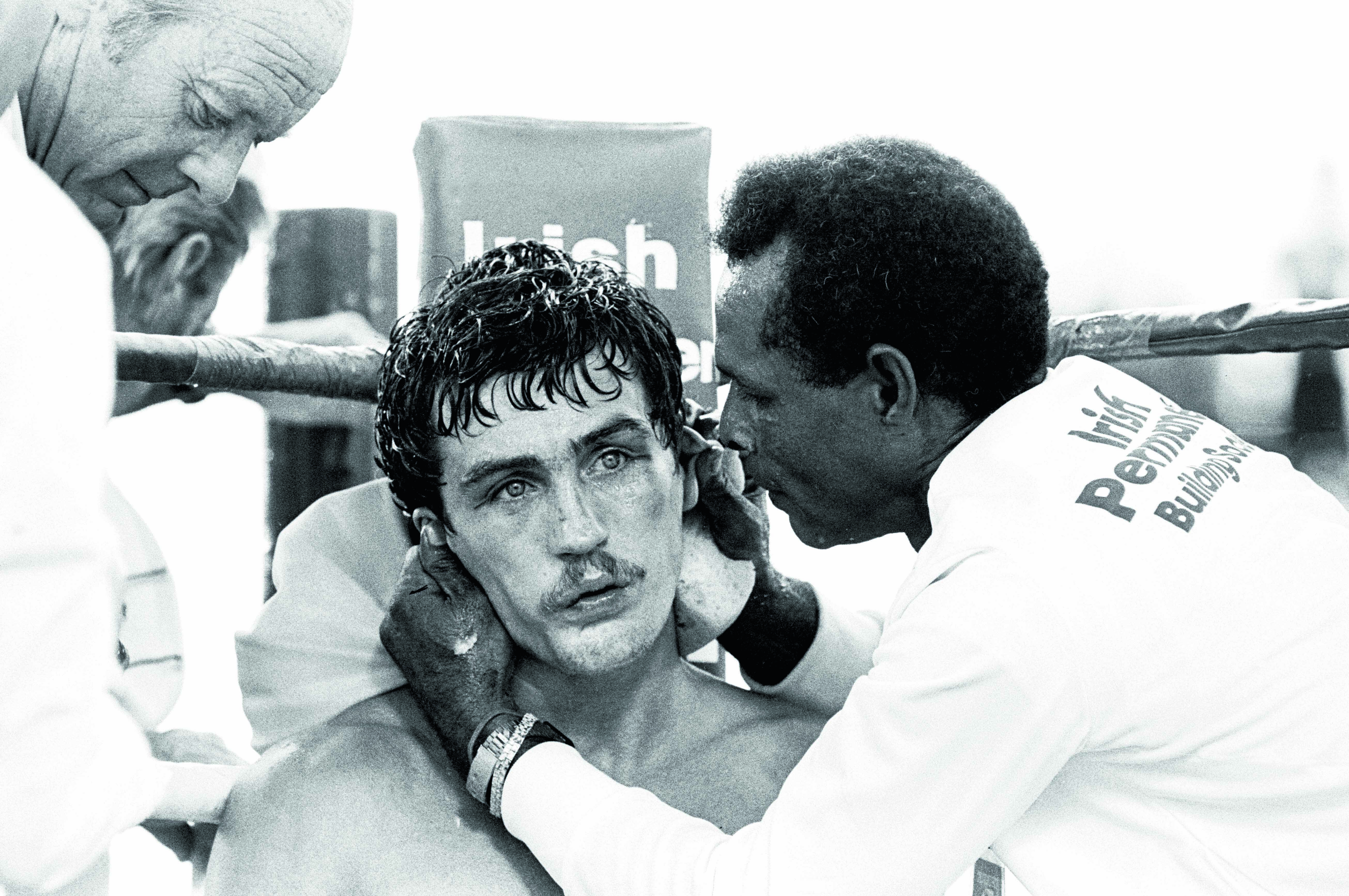

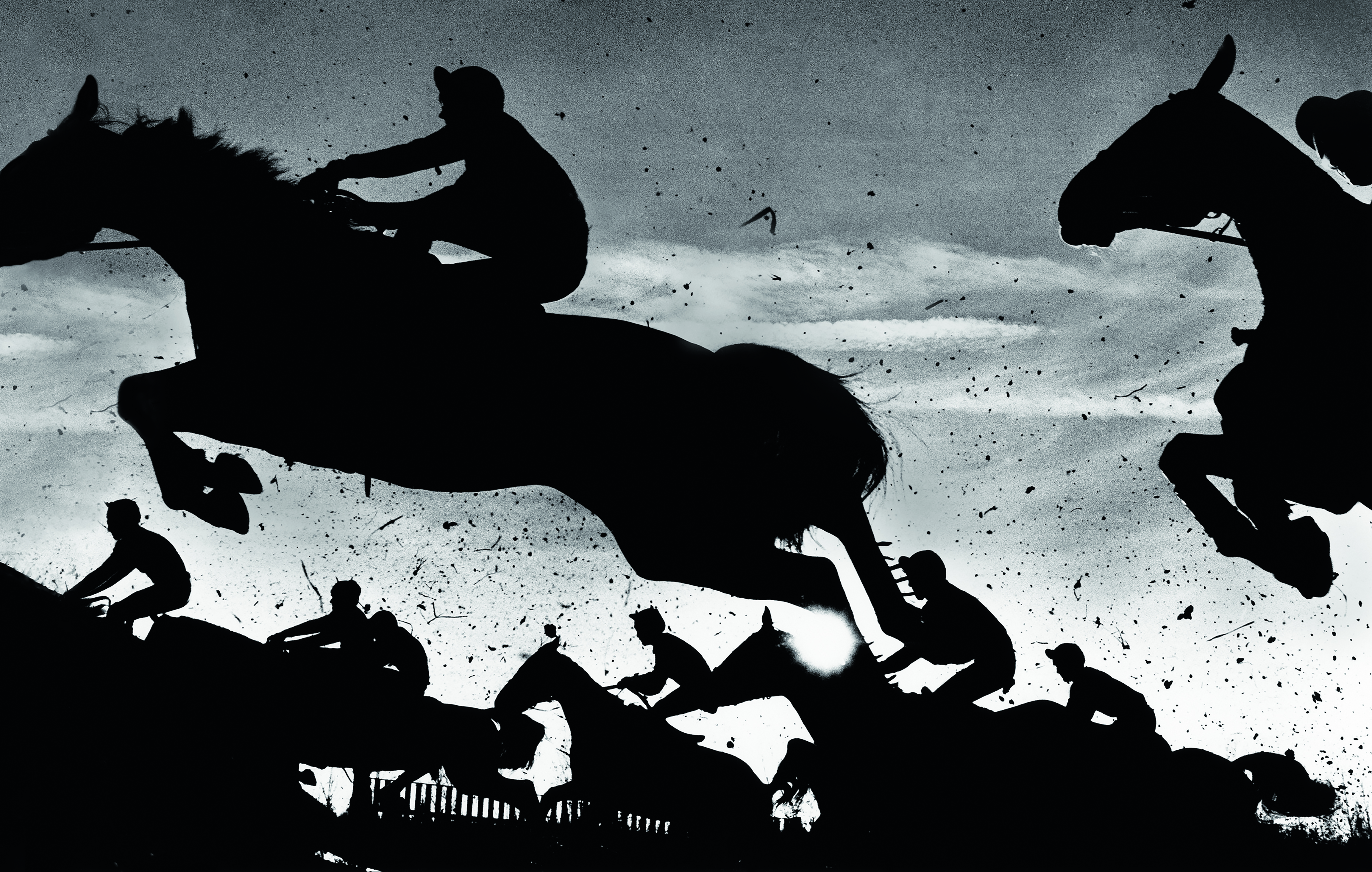
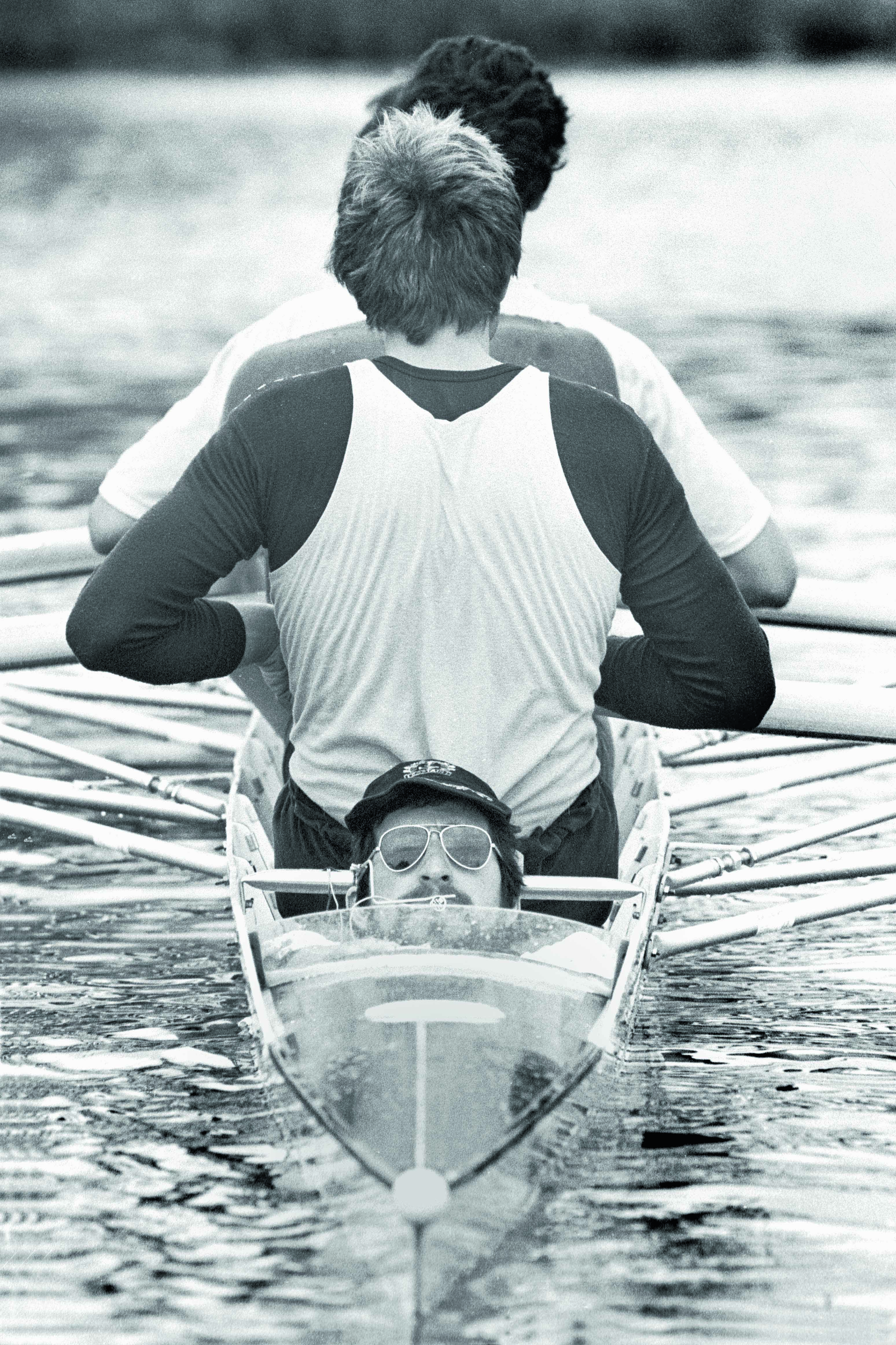
When in the fight did you get this picture?
Halfway through the fight it was obvious he was struggling. And coming back from the thirteenth round I was in the opposite corner and spotted – between the corner men moving around trying to sharpen him up – this face, this expression. I had a 35mm and an 85mm on two cameras, totally inadequate to photograph his face, not that I got much chance. But I thought, ‘There’s the picture’ so I put on a 180mm for when he finished the 14th round and he was sitting in the corner. I managed to get about two frames, and one of these corner men is twisting the lobe of his ear just to sharpen him up. The expression, or lack of expression, in his eyes is just heartbreaking. He finished up going to hospital because he was so dehydrated. I met him later on and he called it “The picture of me with the dead eyes,” which it was.
You said that was one of your favourite photos, but what is your all-time favourite sports photograph taken by you?
That’s a tough one. There’s one I always look at and come back to – it’s a football match. It’s a European Cup final in Rome, Liverpool versus Roma [pictured right]. But it’s not of the football, it’s the crowd. Before the game the Roma fans, all of these Ultras I’d never seen before, were setting off fireworks and smoke grenades and flares, and I thought, ‘how extraordinary.’ If you used a long lens, say a 400mm, you couldn’t see much because all the smoke was going, so I put on a 35mm, jumped over the barrier and went into the crowd. It looks more like a crazy political rally than a football match. It’s one that I’ve always liked, it’s just something you didn’t expect from a football match.
You were very much wedded to your 400mm lens in your working days.
Yes, 400mm was the standard lens, that was the first thing you packed.
What else did you take? Was it a lot of gear, or did you like to keep it to a minimum?
I used to carry as little as possible, partly because if you were doing a skiing event or golf where you had to hike around a course, there might be two rounds in a day. So there would be a monopod with the 400mm, and in the later days when they were better, a zoom or two: 24-70mm, 70-200mm, a couple of camera bodies and lots of stuff packed into your pockets. But I saw it in the States where you go to something like the Masters and the Sports Illustrated guys got their students to carry the cameras. ‘Camera Caddies’ they used to call them. The photographer would take the picture, go off to the next hole and give his student the camera to carry, which would have a 400mm on a monopod, or a 600mm, and the student would get to the next tee, and the photographer would take over. Bizarre!
Were you a Nikon user all the way through your press career?
Nikon all the time. Funnily enough, since I’ve stopped professionally I have tried the little Sony RX10, which is tiny, but I found it too tiny. It gave amazing results, but I want something a little bit bigger than that. The Sony a6300 would have been brilliant but the pancake lens I bought with it is a bit duff. It’s just to stick in my pocket and look for things as I go. I feel absolutely naked if I go out without a camera. The idea of going out without a camera gives me the shakes! What if I find someone or see something really important?
Do you not use your mobile phone to take pictures?
The terrible thing is I’m not very good with new technology. I’ve got an iPhone 6, which I got purely because on holiday you can use it as a modem to download BBC programmes and listen to Radio 4 on, but I’ve never cracked the camera. I shot a picture of my wife on the towpath the other day and it looked beautiful until I tried to enlarge it. I obviously haven’t got the right handle on it because it looks a bit grainy, but I know you can get remarkable results on the iPhone. I’m just helping with judging a cricket photography competition and one of the entrants is a really nice black and white image showing a lovely sky with silhouettes of kids playing cricket. I looked at the information and it said it was taken with an iPhone 6, and the quality looks stunning. So it is obviously doable, if I could only get my head around to do it. I’ll have to ask one of my kids!
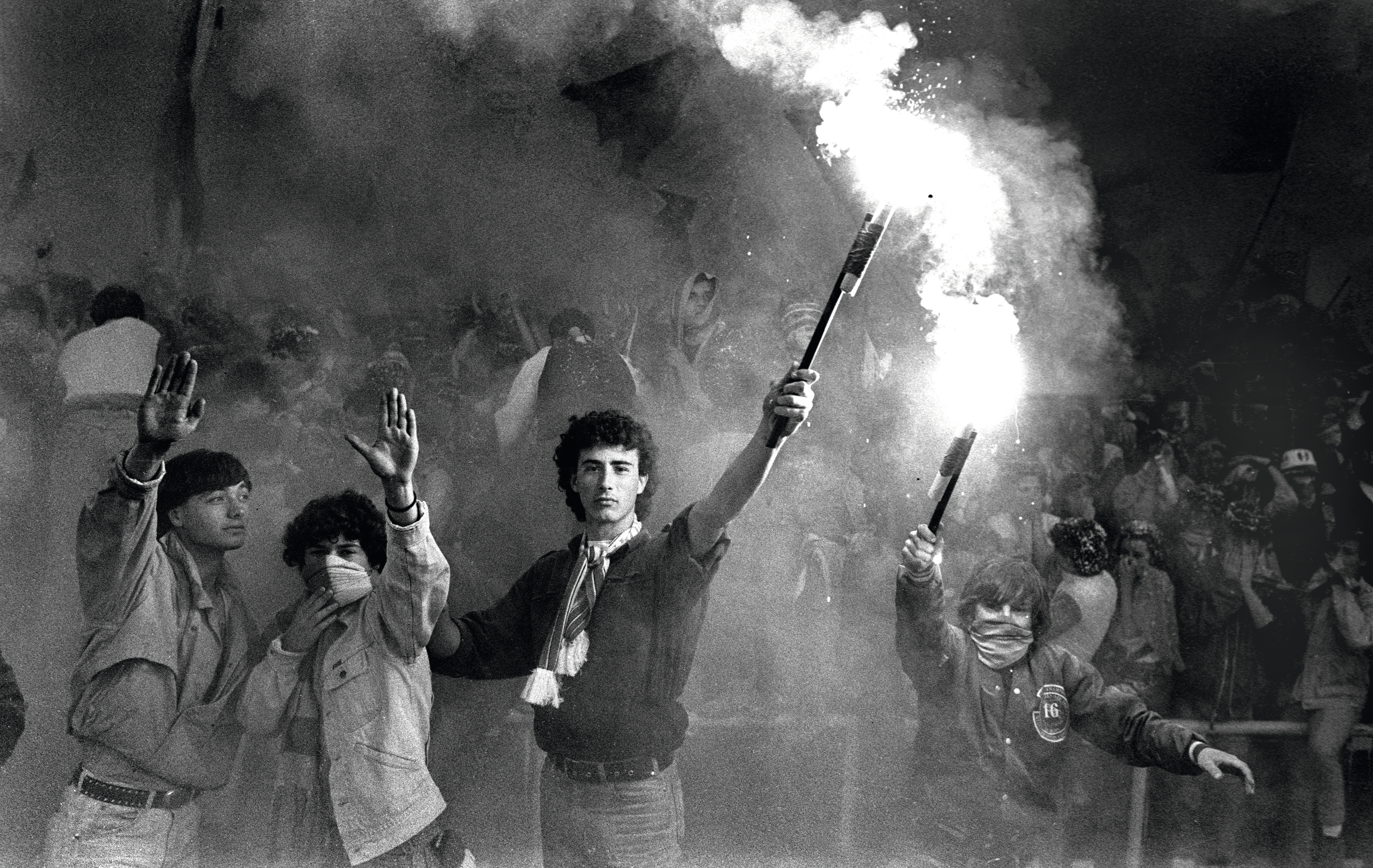
© All images Chris Smith
A former award-winning editor of Amateur Photographer magazine, Keith is the founder of Outdoor Photography, which he edited from 2000 to 2007, Black + White Photography and Wild Planet, the world’s first monthly digital magazine devoted entirely to wildlife photography. He is a highly regarded competition judge and since 2016 has chaired the jury of the Nature Photographer of the Year awards. He is the co-founder (with Britta Jaschinski) of Photographers Against Wildlife Crime™, an international group of award-winning photographers who have joined forces to use their powerful and iconic images to help bring an end to the illegal wildlife trade.
